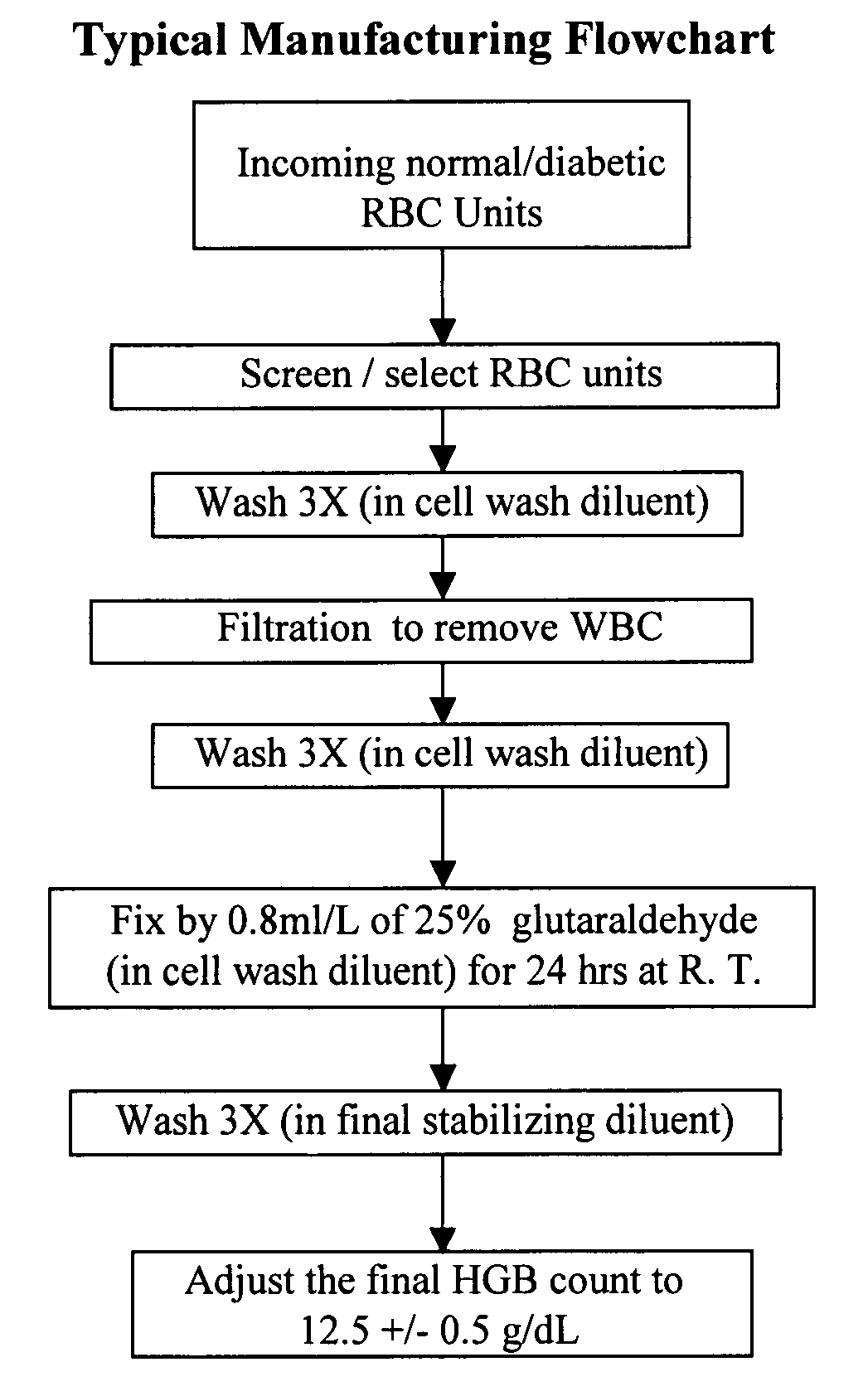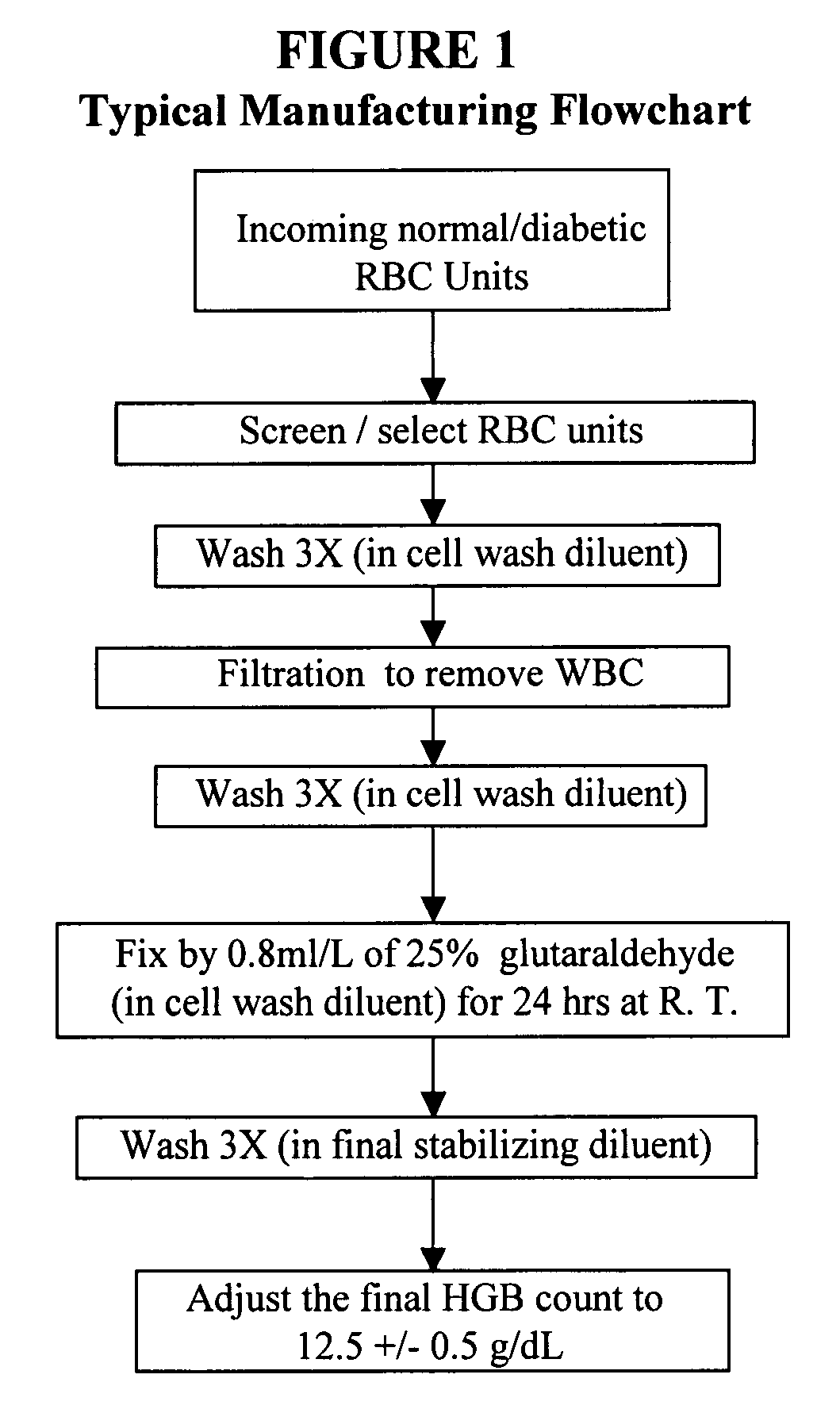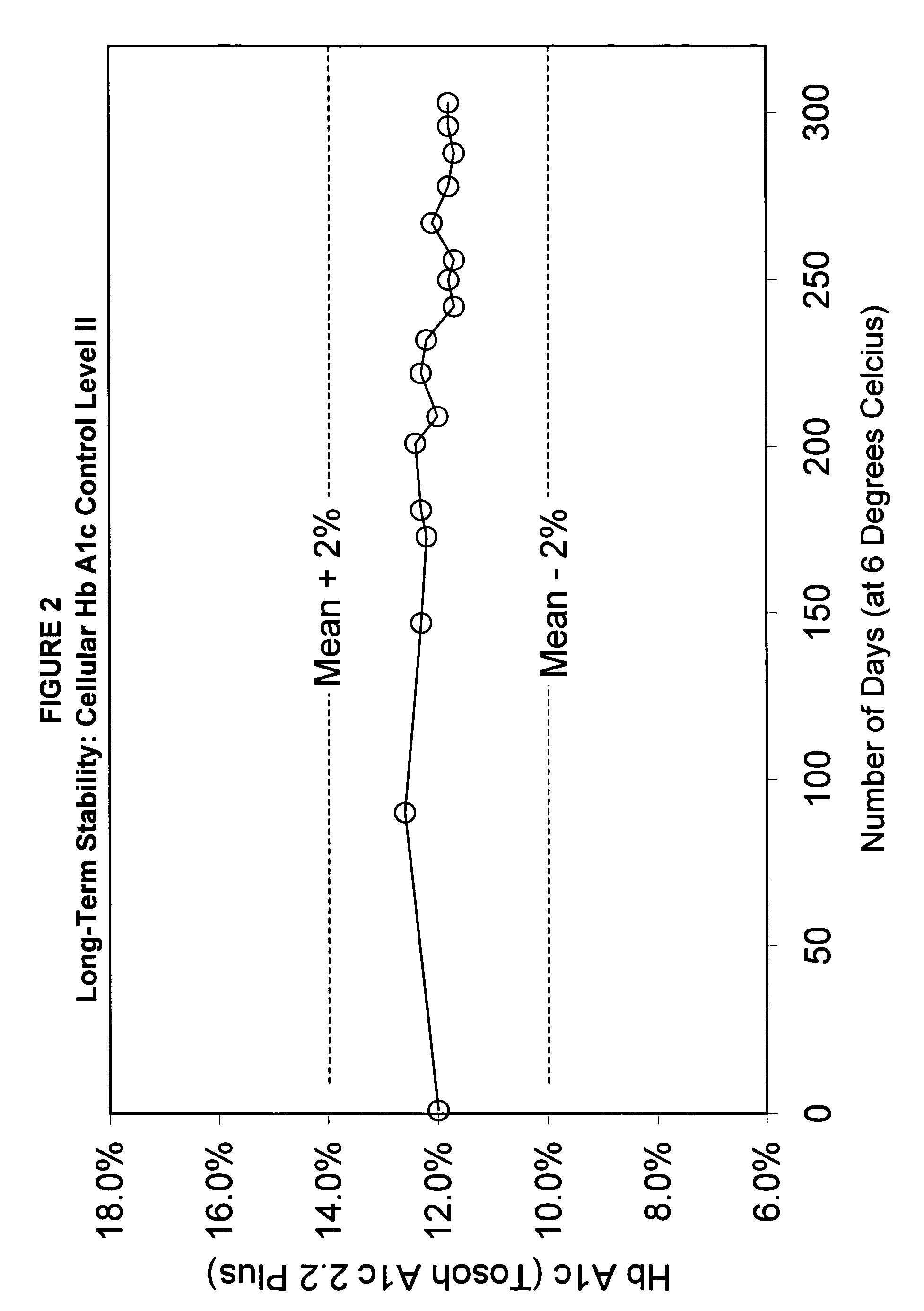Cellular controls for glycated hemoglobin Hb A1c
a technology of glycated hemoglobin and cell control, which is applied in the field of cellular control of glycated hemoglobin hb a1c, can solve the problems of not being able to apply the currently manufactured hemolyzed liquid control, unable to meet the needs of shown various limitations. , to achieve the effect of preventing hemolysis of red blood cells
- Summary
- Abstract
- Description
- Claims
- Application Information
AI Technical Summary
Benefits of technology
Problems solved by technology
Method used
Image
Examples
example 1
Preparing Abnormal High (Level II) Hemoglobin A1c Controls From Diabetic Donor Blood Samples
[0123](1) Donor Information
[0124]All “flagged” RBC units as described in section D 2 above were purchased from a commercial blood bank. There were time intervals of 3 to 14 days between blood drawing and unit arrival. Each “flagged” unit, containing approximately 260 mL packed RBC and 60 mL Streck® CPDA diluent (described in section D 1), had been tested for HBsAg (non-reactive), HCV Ab (negative), HIV-2 Ab (negative), HIV-1 Ag (negative) and syphilis (negative) prior to the shipment. Qualified diabetic RBC units with abnormal high Hb A1c levels of a blood sample were identified through this “flagged” screening procedure using the Tosoh® A1c 2.2 Plus HPLC analyzer. Four of the qualified units were later used in the manufacture of Level II Hb A1c cellular controls. The data from the four qualified diabetic donor samples are summarized as follows:
[0125]
TABLE 6Information of Qualified Diabetic R...
example 2
Preparing Normal (Level I) Cellular Hemoglobin A1c Controls Using Human RBC's
[0146]All normal RBC units were purchased from a commercial blood bank. There were time intervals of 3-14 days between blood drawing and unit arrival. The screening procedure, using 10 randomly selected RBC samples, was conducted immediately following the arrival of RBC units. Three qualified RBC units (A1c=5.0%, 5.2% and 5.3%) were identified using the Tosoh® A1c 2.2 Plus analyzer. The details of RBC units and screening procedure were described in section D 1.
[0147]A Level I A1c control (research pilot lot RPL #05004) was manufactured using the three qualified RBC units. The same general manufacturing flowchart (FIG. 1) was followed. The Level I Hb A1c control demonstrated a value of 5.8% for % A1c (Tosoh® HPLC).
[0148]Long-term stability (LTS) tests were conducted on a regular basis to demonstrate (1) that the normal Level I Hb A1c control varies no more than ±1% (percentage points), (2) that there is mini...
example 3
Development Of Abnormal High Hemoglobin A1c Control Via Slow Glycation At Low Temperature
[0152](1) Slow Synthesis of Hb A1c Using Normal RBC
[0153]All normal RBC units were purchased from a commercial blood bank. Pooled samples from 10-15 randomly selected RBC units were first washed into a cell wash diluent as previously described in section C 1 and Table 2 and filtered by leukocyte removal filter. The ages of RBC's ranged from about 14 to about 28 days since blood drawing. The % Hb A1c value was 6.5% according to the Beckman Synchron CX® system.
[0154]The washed and filtered RBC samples were then incubated with a glycation diluent at a ratio of 1 to 2 (VRBC:VDiluent) at 6° C. The diluent contained about 3.15% glucose for increasing the rate of reaction and the yield of glycated products. The isotonic and pH neutral diluent also contained appropriate cell stabilizers, cell metabolites, buffers, antibiotics-antimicrobial agents and anti-fungal agents for stabilizing the RBC during the...
PUM
| Property | Measurement | Unit |
|---|---|---|
| molecular weight | aaaaa | aaaaa |
| time | aaaaa | aaaaa |
| weight | aaaaa | aaaaa |
Abstract
Description
Claims
Application Information
 Login to View More
Login to View More - R&D
- Intellectual Property
- Life Sciences
- Materials
- Tech Scout
- Unparalleled Data Quality
- Higher Quality Content
- 60% Fewer Hallucinations
Browse by: Latest US Patents, China's latest patents, Technical Efficacy Thesaurus, Application Domain, Technology Topic, Popular Technical Reports.
© 2025 PatSnap. All rights reserved.Legal|Privacy policy|Modern Slavery Act Transparency Statement|Sitemap|About US| Contact US: help@patsnap.com



